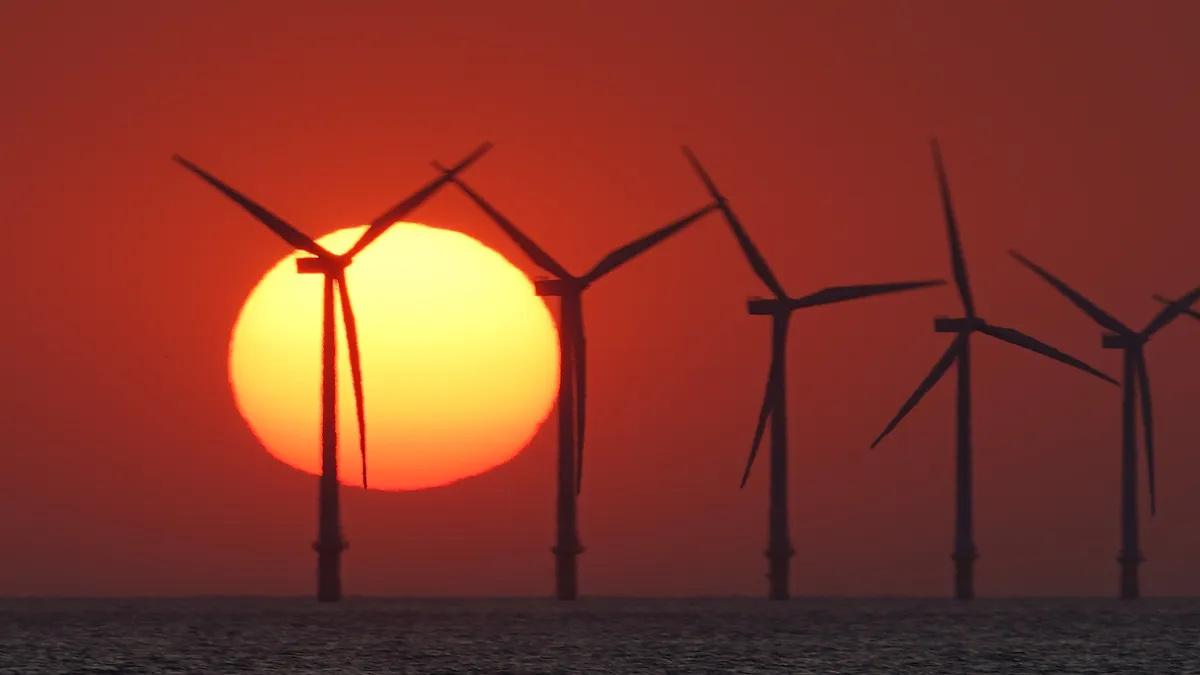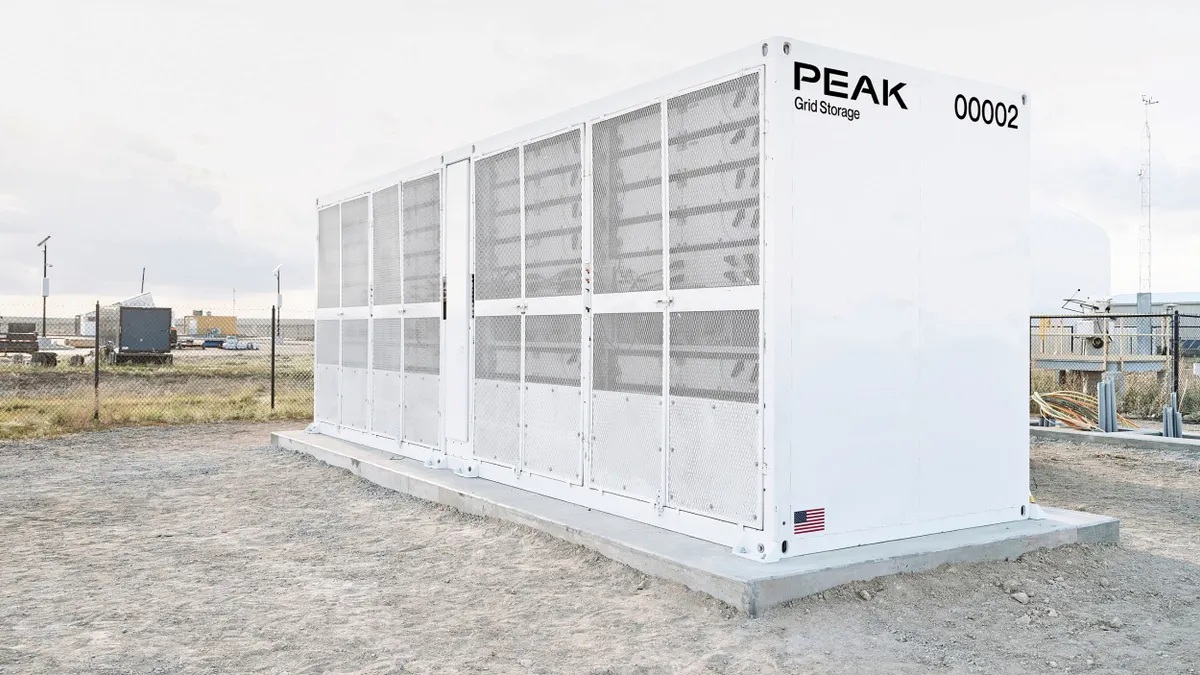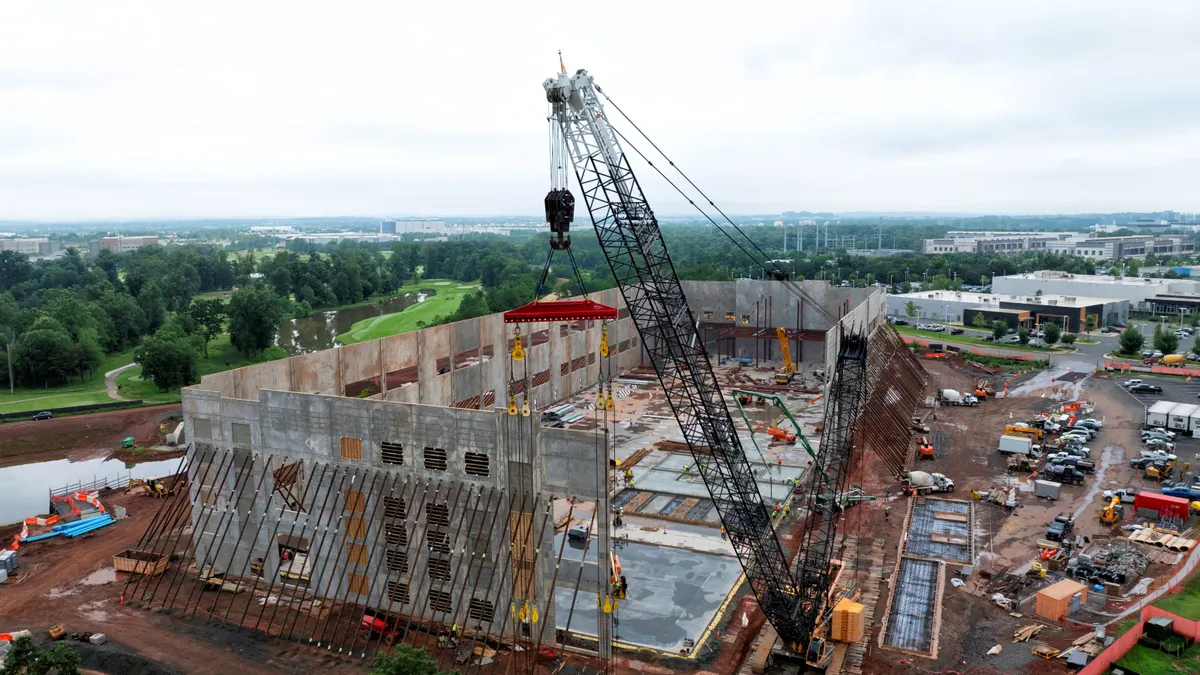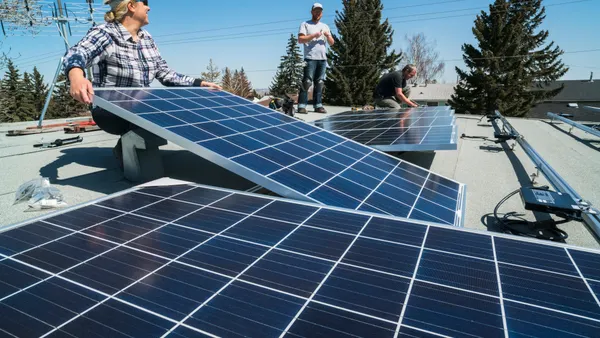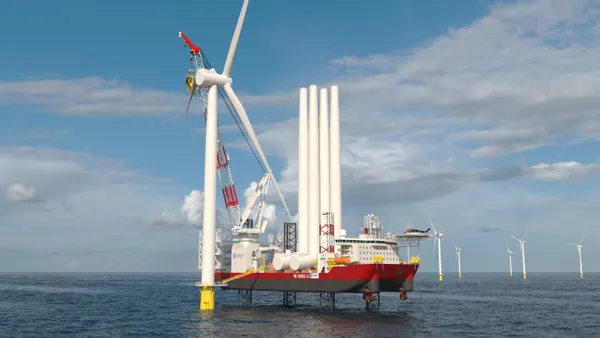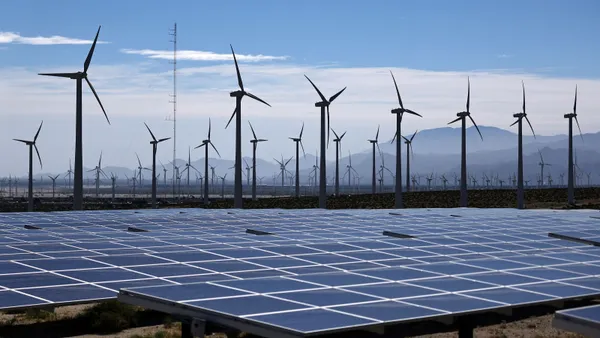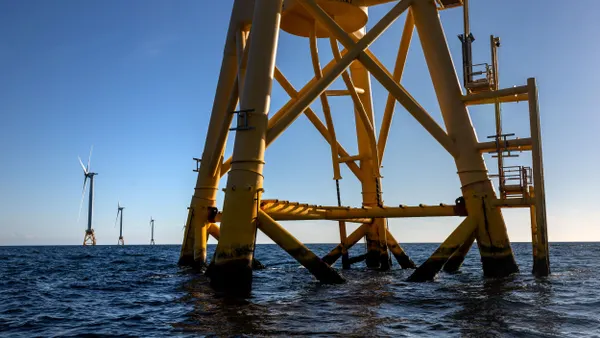Dive Brief:
- President Donald Trump began his second term Monday with a bevy of executive orders, including one that temporarily withdraws all federal waters from consideration for offshore wind leasing, and pauses permitting, approvals and loans for all onshore and offshore wind projects. The administration’s pick for Secretary of the Interior, former North Dakota governor Doug Burgum, will lead a comprehensive assessment of federal wind leasing and permitting practices, the order said.
- Trump’s order cites “various alleged legal deficiencies underlying” the federal government’s leasing and permitting of wind projects, and concerns that the projects could lead to “negative impacts on navigational safety interests, transportation interests, national security interests, commercial interests, and marine mammals.”
- Trump also issued Monday executive orders that declared an energy emergency and a regulatory freeze.
Dive Insight:
While Trump has been a staunch critic of both onshore and offshore wind generation, North Dakota became a national leader in onshore wind generation under Burgum, who took office as governor in 2016. Wind power generation more than doubled in the state from 2015 to 2023, according to the U.S. Energy Information Administration, and currently provides 36% of the state’s electricity.
“This withdrawal shall go into effect beginning on January 21, 2025, and shall remain in effect until this Presidential Memorandum is revoked,” the order said. Offshore wind critic Rep. Jeff Van Drew, R-N.J. said last week that Trump asked him to draft this executive order, and that the pause would last for six months, according to reporting from AP News.
In a Monday release, American Clean Power Association CEO Jason Grumet said that the group “strongly supports President Trump’s effort to reform the permitting process to speed the development of all forms of domestic energy production.”
“President Trump is correct that absent significant changes in energy policy, our nation will not be able to power our growth in manufacturing and achieve digital dominance that is key to national security while lowering consumer energy bills,” Grumet said. But, he added, “ACP strongly opposes blanket measures to halt or impede development of domestic wind energy on federal lands and waters.”
“The contradiction between the energy-focused Executive Orders is stark: while on one hand the Administration seeks to reduce bureaucracy and unleash energy production, on the other it increases bureaucratic barriers, undermining domestic energy development and harming American businesses and workers,” he said.
The Natural Resources Defense Council issued a Monday statement noting that “wind provides more than 10% of U.S. power today, making it the largest source of renewable energy,” and “of onshore wind projects, 99% are on private land, so they cannot be blocked by federal action.”
“The top four wind-producing states are: Texas, Iowa, Oklahoma and Kansas,” NRDC said. “The industry employs more than 131,000 Americans in all 50 states, including 20,000 wind manufacturing jobs.”
Trump’s energy emergency order states that the “identification, leasing, development, production, transportation, refining, and generation capacity” of the U.S. for both energy and critical minerals “are all far too inadequate to meet our Nation’s needs.”
The order tasks heads of federal departments and agencies to “identify and exercise any lawful emergency authorities … to facilitate the identification, leasing, siting, production, transportation, refining, and generation of domestic energy resources, including, but not limited to, on Federal lands” and “expedite the completion of all authorized and appropriated infrastructure, energy, environmental, and natural resources projects.”
The regulatory freeze order stops executive departments and agencies from proposing or issuing any new rules until a Trump appointee assumes control of the department or agency, and reviews and approves the rule.
The order also instructs departments and agencies to immediately withdraw any rules that have been sent to the Office of the Federal Register but not yet published.
“Should actions be identified that were undertaken before noon on January 20, 2025, that frustrate the purpose underlying this memorandum, I may modify or extend this memorandum, to require that department and agency heads consider taking steps to address those actions,” the order says.



